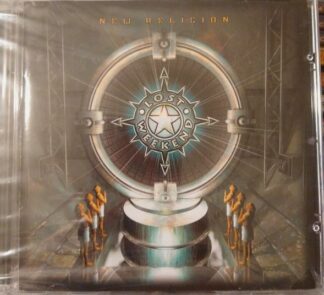Description
All tracks written by Geddy Lee, Alex Lifeson, and Neil Peart except “Test for Echo” by Lee, Lifeson, Peart, and Pye Dubois.
Released September 10, 1996
Recorded January–March 1996
Produced by: Peter Collins & Rush
Recorded: Bearsville Studios, New York & Reaction Studios, Toronto, January–March 1996
Genre Hard rock, Prog rock
No. Title Length
1. “Test for Echo” 5:56
2. “Driven” 4:27
3. “Half the World” 3:43
4. “The Color of Right” 4:48
5. “Time and Motion” 5:01
6. “Totem” 4:58
7. “Dog Years” 4:55
8. “Virtuality” 5:44
9. “Resist” 4:23
10. “Limbo” (instrumental) 5:29
11. “Carve Away the Stone” 4:06
……………….Length 53:32
Geddy Lee – bass guitar, vocals, synthesizers
Alex Lifeson – electric and acoustic guitars, mandola
Neil Peart – drums, cymbals, hammer dulcimer

Songs:
1. “Test for Echo” features lyrical contributions from Pye Dubois who had also written lyrics for three Rush songs prior. Lee said the words reflect the group’s current situation at the time. Lifeson plays a Les Paul Custom guitar and described the song as “pure Rush”.
2.”Driven” was written entirely on Lee’s bass guitar and features three separate bass tracks. Lifeson said that Peart played “a little bit back on the beat” which gave the song a “heavier character” and caused Lee and himself to adjust their parts to fit his drums.
3.”Half the World” features Lifeson playing a 10-string mandola which he had played to get a feel for the instrument, but found it changed the song’s personality completely. He presented it to Lee who expressed initial doubts as it displayed an unusual texture, but grew to like it.
5.”Time and Motion” originated from a set of lyrics that Peart had written, after which Lee and Lifeson worked on music for it which developed quickly. They wanted to dramatise the first lyrical phrase by incorporating major chords, but Lee said a first version of the track was put together some years prior, but never used.
Lee described “Dog Years” as “a bit punky”.
9. Lifeson picked “Resist” as one of his favourite tracks, and among the best Rush had ever recorded. The line, “I can resist everything except temptation,” is a quote from the play Lady Windermere’s Fan by Oscar Wilde.
10.”Limbo” is an instrumental track that was pieced together from different bits of ideas that the group had sketched out but remained unused.
-
In the middle of the song, when you hear, “Whatever happened to my Transylvania twist?”, it’s a quote from “Monster Mash,” a 1962 hit by Bobby “Boris” Pickett and the Crypt-Kickers. The sounds heard at the beginning of the song (water bubbling, chains dropping and dragging) are also taken from “Monster Mash.”
-
Limbo was the first level of Hell in the book Dante’s Inferno.
-
Neil Peart (from Jam! Showbiz, Oct. 16, 1996): “I’d been stuck on Monster Mash and we were trying to use the Internet to get the words because I couldn’t remember them. One of the guys on the production team is an Internet preacher. So I said, ‘Here’s your chance, go get these lyrics for me.’ Well, he went onto the Internet and found the lyrics – but they were wrong! In all the jokes of that, our co-producer, Peter Collins, went out and bought the CD that had a compilation of some funny songs like that. We got to listening to it, thinking about how funny it was and decided to put some samples of it in there. That’s Igor going ‘Goo mash goo.’ We had to get special permission and pay money and everything. You think it’s so strange, when you just want to make a joke, and people want you to get permission and pay money.”
Artwork: The cover displays an inuksuk, native to the band’s home country of Canada. Created by the Inuit, an inuksuk is a stone figure in the shape of a human used to mark a food cache, hunting ground or a place where someone lost their life.
AllMusic reviewer Stephen Thomas Erlewine gave Test for Echo three out of five stars, saying that Rush has “rarely played better in the past ten years than they have on Test for Echo”.
Released on Sept. 10, 1996, there had been a three-year gap between Test for Echo and its predecessor, Counterparts, the longest break between albums for the band up to that time. In between, the band kept busy with other things:
Guitarist Alex Lifeson released his solo project Victor, Lee was spending time with his newborn baby girl, while drummer Neil Peart organized a tribute concert to one of his heroes, drummer Buddy Rich. Peart also was, surprisingly, taking drum lessons.
Lifeson says the break did him good. “I was really fired up. I just felt like I had a clearer picture of what I wanted the guitar’s presence to be,” he told interviewer Paul Semel after the record’s release. “I wanted to focus more on the songwriting, really develop the arrangements and all of that.”
In the tour book, Peart ruminated on the meaning of the title. “Everybody needs an ‘echo,’ he wrote, “some affirmation to know they’re not alone.”
The title cut of the 16th Rush LP kicks off the album with guitars, thankfully, back to the front of the mix. Immediately, the interplay between the three is on display, something the band has never lost over all the years. One thing to note about the playing here is Neil Peart’s newfound direction. Peart had begun taking drum lessons with an old pro, drummer Freddie Gruber. In the process, Peart switched his style from a “matched grip” (holding the sticks the same in both hands) to ‘traditional’ which has the left hand holding the stick between thumb, forefinger and middle finger, jazz style.
For Peart, it was a very important change in his signature style. “I think it all adds up to an enhanced time sense,” he told Modern Drummer. “I did start with traditional grip and then left it behind in favor of matched. It’s been said — even in the pages of your magazine — that matched grip is a physically superior approach. I still believe that’s true. However, that’s not the whole story. What I’ve realized is that traditional grip can be a more musical approach to playing the drums. It all has to do with the rotational effect it creates and the way it affects the time.”
“Half the World” and “The Color of Right” are two of the album’s finest moments, both incorporating a strong melodies and driving rhythms, while “Time and Motion” finds Lifeson delivering one of his finest guitar solos on the album. True to form, Rush fans welcomed Test for Echo with open arms, taking the album to No. 5 on the Billboard chart and pushing sales into gold terrain.
The break between Test for Echo and their next studio effort would be even longer due to tragedy within the band, with Peart losing his daughter in a terrible accident, and his wife to cancer in less than a year.
At first listen, the songs may be a bit thick, but once you get through this opaque outer atmosphere you can hear the real underlying genius of this record.
Rush started to move away from its 1980s style with Presto and, to a lesser extent, on their early nineties albums Roll the Bones and Counterparts, both of which were produced by Rupert Hine. In each of these cases, it was evident that the band was attempting to forge a distinct and relevant sound.
Test for Echo starts suddenly and dramatically with a strong but measured chord pattern that builds ever so subtly before erupting into a classic-Rush style rudimentary riff. Stylistically, this song seamlessly passes through multiple repeating sections, while thematically it is a somewhat poetic commentary on life. The song reached #1 on the Billboard Hot Mainstream Rock Tracks chart and nearly topped the Canadian Singles Chart, making “Test For Echo” Rush’s most successful single in about a decade. The equally intense “Driven” starts with a hyper-tense riff in an odd-timing with a strategic verse break of Alex Lifeson‘s acoustic guitar to temporarily break the tension. Lyrically, this song explores the dangers of over ambition.
“Half the World” is another philosophical rocker with animated and entertaining music throughout. Here, Geddy Lee provides some of his finest bass work on the album, with Lifeson layering some great electric and acoustic guitar textures. “The Color of Right” has a heavy blues rock feel in the vein of AC/DC through the intro, while the rest of the song drives through with nice, upbeat textures, making it a fine listen, while including some eighties-style synths, “Time and Motion” does thankfully settle into a guitar-centric riff jam for the verses and choruses, while “Totem” features another musical jam, albeit a mocking tone lyrically against people of faith.
The highlight of the album is “Resist”, which starts with moderate a piano and acoustic verses, accented with fine bass and lead vocals. This is a true change of pace for the heavy rock album and gives it some real depth overall. Following the bass-driven near-instrumental of “Limbo” with slightly comical elements, “Carve Away the Stone” closes things out with Lifeson’s majestic electric guitar and Peart’s lyrical theme about removing obstacles in life.
Test for Echo reached the Top 5 on the album charts and was followed by an extensive North American tour by Rush into 1997. However, personal tragedy in Peart’s life lead to a five-year hiatus by the group into the next century.



Check the www.yperano.com site for more RUSH vinyl records, CDs (and T-shirts, tour programs)
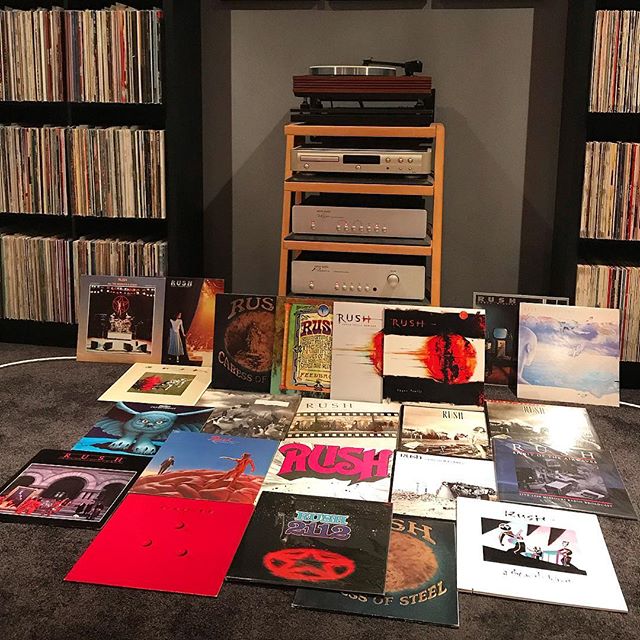
Check the www.yperano.com site for more RUSH vinyl records, CDs (and T-shirts, tour programs)




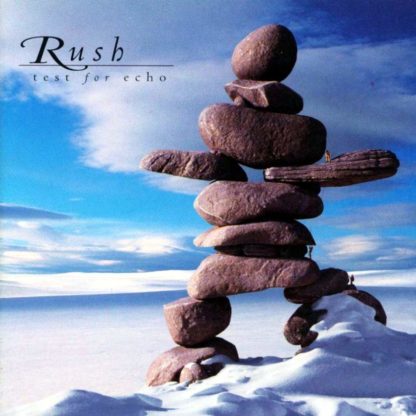



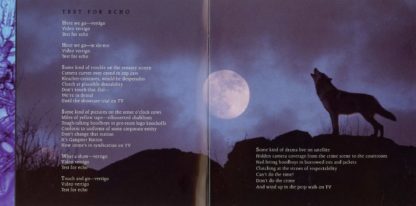







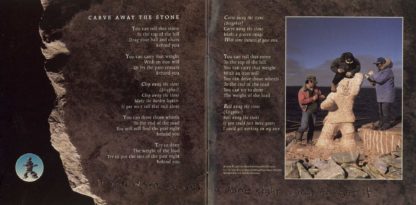

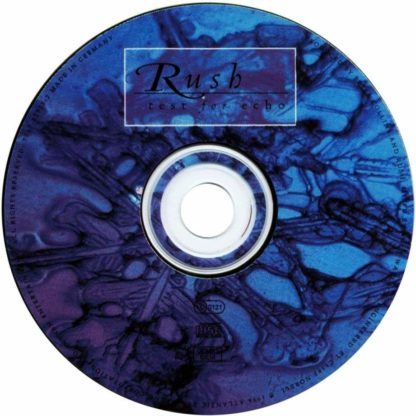




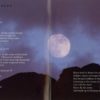







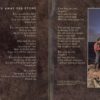


![DESPISTADO: The Emergency Response CD [post hardcore] s](https://yperano.com/wp-content/uploads/2016/03/18349-DESPISTADO-The-Emergency-Response-CD-post-hardcore-s.jpg)
